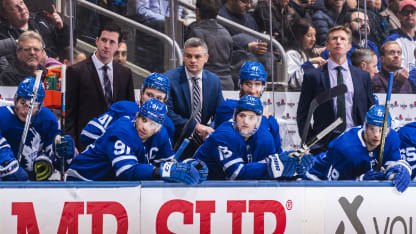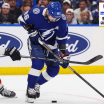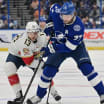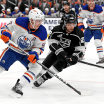The power play is the final area where the Maple Leafs have improved considerably under Keefe after he experimented with the top units' personnel. Under Babcock, defenseman Morgan Rielly was second among Toronto skaters in power-play time on ice per game (3:22), averaging more than a minute per game than Barrie (2:08). Keefe made the adjustment of putting Barrie on the top unit, and Barrie is averaging more PPTOI per game (1:49) than Rielly (1:19). The sample size for Keefe is much smaller than it was for Babcock, but Barrie seems to have provided a new look to the top unit. Players do go through hot and cold streaks, so Rielly could take shifts with the top unit under Keefe too, but the initial move to give Barrie a shot with the top personnel gave the Maple Leafs a much-needed boost.
One statistical category where the Maple Leafs have regressed under Keefe is 5-on-5 shot attempts differential, or puck possession. They were second-best under Babcock and are 11th since Keefe took over (plus-25). This is not cause for concern because when examined more closely the Maple Leafs have improved their possession metrics when they have a lead during a game. Under Babcock, the Maple Leafs were out-attempted by their opponents (minus-8) at 5-on-5 when leading games and are plus-38 in the same situation under Keefe. This statistic suggests that the Maple Leafs no longer sit back and try to protect the lead, but instead keep attacking in an attempt to increase it.
It's only been 12 games, but early signs of the coaching change are encouraging for the Maple Leafs and their now-healthy roster. Their numbers weren't bad under Babcock, and the Maple Leafs ultimately could have broken through on special teams, but the switch to Keefe gave them an immediate jolt. One storyline to watch for the remainder of the season is how Keefe continues to utilize defensemen Barrie, Jake Muzzin and Cody Ceci, who each can become an unrestricted free agent July 1, on special teams. Entering the winter roster freeze, the Maple Leafs are tied for third with the Montreal Canadiens in the Atlantic Division and should continue to climb the standings if they maintain their strong special teams play under Keefe.


















